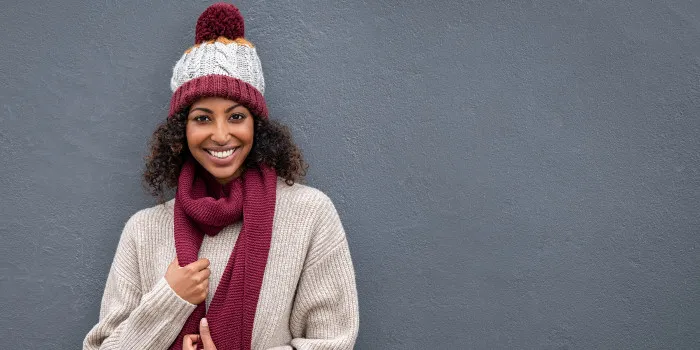When the days get shorter and the temperature drops, winter health problems can crop up—everything from the usual cold and flu viruses to frostbite and falls on icy sidewalks. But staying healthy this winter is more challenging than usual thanks to the COVID-19 pandemic, and cases are expected to rise as people spend more time indoors.
Here’s what you can do to keep you and the people you love healthy this winter.
Keep Up the COVID-19 Preventive Measures.
Experts say the same precautions we’re taking to help protect ourselves and our loved ones from COVID-19—steps like wearing a mask, social distancing, washing hands frequently and disinfecting high-touch surfaces like doorknobs—will help decrease the spread of cold and flu viruses this winter.
Get a Flu Vaccine.
The flu vaccine is the single best way to avoid getting the flu. It’s recommended for everyone 6 months and older, but especially for people who are at high risk for serious complications from influenza, such as adults 65 years and older, and those with chronic health conditions such as heart disease, diabetes and asthma.
But getting a flu shot is even more important this year, health experts say, for a few reasons:
- Getting COVID-19 and the flu at the same time increases the likelihood of complications. A recent study revealed that people who had COVID-19 and the flu were sicker than those who had COVID-19 alone.
- COVID-19 and the flu can cause the same symptoms: fever, cough, chills, fatigue and body aches. So if you get the flu, you may need to be tested for COVID-19, and then quarantine for 14 days.
- Some people who get the flu need to be hospitalized. Helping to prevent the spread of flu by getting vaccinated can keep our hospitals from getting overloaded with patients if COVID-19 cases continue to rise during the winter.
While experts recommended getting the flu shot in September or October this year, it’s not too late to get vaccinated in December or even January. Flu activity usually peaks between December and February, but it can continue to circulate as late as May.
Dress Warmly and Stay Dry.
Socializing outdoors rather than inside is recommended to help prevent the spread of the coronavirus, but if you’re going to spend extended time outside in the cold temperatures, dressing correctly is key.
Starting with an inner layer made of wool, silk or polypropylene will hold more body heat than cotton. Next, wear an insulation layer (wool, down or fleece) that helps retain heat by trapping air close to your body. Add a tightly woven outer layer that’s water- and wind-resistant to protect you from wind, rain and snow. Don’t forget a hat, a scarf or knit mask to cover your face and mouth, and mittens, which are warmer than gloves.
Be aware of the signs of hypothermia (abnormally low body temperature) and frostbite. Hypothermia symptoms include shivering, exhaustion or feeling very tired, confusion, fumbling hands, memory loss, slurred speech and drowsiness. Shivering is usually the first warning sign that your body is losing heat, so go inside as soon as possible if you’re constantly shivering. Signs of frostbite include a white or grayish-yellow skin area, skin that feels unusually firm or waxy, and numbness. If you notice signs of frostbite, seek medical care as soon as possible.
Tread Carefully on Wintry Surfaces.
Many injuries related to cold weather happen from falls on icy or snow-covered sidewalks, steps and other slippery surfaces, and falls are particularly dangerous for people with bleeding disorders.
Keep your steps and walkways as free of ice as possible by using rock salt or another chemical de-icing compound. Sand may also be used on walkways to reduce the risk of slipping.
Shovel snow carefully and if you do find yourself having to navigate an icy patch, walk like a penguin: take small, slow, shuffle-like steps with your knees slightly bent and your feet pointing out a little. Keep your arms at your sides and your hands out of your pockets.

